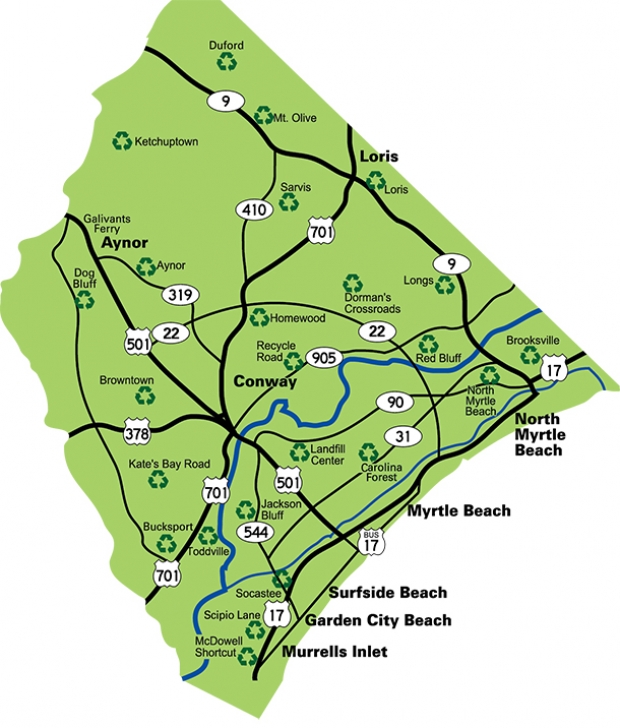Do your part to help the environment with these easy steps

Recycling has long been touted as something everyone should do to “save the environment,” but what exactly does this mean? Does recycling really make a difference? What can be recycled? Where do discarded plastic bottles, cardboard and aluminum cans even go?
In Horry County, they end up at the Solid Waste Authority’s (SWA) Materials Recycling Facility (MRF) off of S.C 90 in Conway. Georgetown County has its own Recycling and Collections division located off of S.C. 51. These centers use state-of-the-art equipment to sort, package and ship recyclables to factories that turn them into new products.
These new products are surprisingly varied; not only can plastic bottles be turned into new containers, but also fabric for clothes, carpeting, patio furniture and more. This transition happens relatively quickly. For example, an aluminum can is able to be melted down, turned into a new can, filled with a beverage and placed back on a store shelf in less than 60 days.
The amount of energy saved by recycling is astonishing. Recycling one aluminum can saves 95 percent of the energy used to make a new one from virgin material—that’s enough energy to power a TV for three hours. Looking at recycling on a larger scale, one ton of office paper saves 17 trees, 7,000 gallons of water, 463 gallons of oil, 3 cubic yards of landfill space and enough energy to heat an average home for six months.
Beyond the environmental benefits, recycling is good for the economy. Recycling in the U.S. is a $236 billion a year industry, employing more than 1.1 million workers nationwide. Recycling creates more jobs than simply throwing out your garbage. Dumping 10,000 tons of waste in a landfill creates six jobs, while recycling 10,000 tons of waste creates 36 jobs.
The average person generates more than four pounds of trash every day, and the Environmental Protection Agency estimates that 75 percent of this waste is recyclable. Currently, South Carolina has a recycling rate of 26.5 percent (meaning only 26.5 percent of our garbage is actually recycled) with a goal of 40 percent by 2020. In 2015, South Carolinians generated 4,159,190 tons of garbage; of that, 1,101,190 tons were recycled.
Recycling is relatively easy. Many Grand Strand communities offer municipal recycling programs (check out www.solidwasteauthority.org/residential.html for more information) that offer curbside pickup. For residents outside of these areas, Horry County offers 24 recycling convenience centers. You can view a map of convenience center locations at www.solidwasteauthority.org/recyclingcenters.html. Georgetown County offers 14 recycling convenience centers, which can be found at www.georgetowncountysc.org/recycling/.
For more information about recycling, visit the Solid Waste Authority website www.solidwasteauthority.org or schedule a free tour of the facility (forms available online).
What can be recycled?
Curbside and Recycling Centers:
• Newspaper and Inserts
• Notebook and Computer Paper
• Cardboard Boxes
• Cereal and Snack Boxes
• Glass Bottles, Jugs and Jars
• Phone Books
• Junk Mail
• Magazines
• Plastic Jugs and Bottles (No. 1 through No. 7)
• Metal Cans (aluminum, steel, and aerosol)
Recycling Centers Only:
• Used Motor Oil
• Motor Oil Filters
• Motor Oil Bottles
• Large Appliances
• Tires
• Batteries
• Electronics
• Yard Trimmings
• Scrap Metal
• Cooking Oil